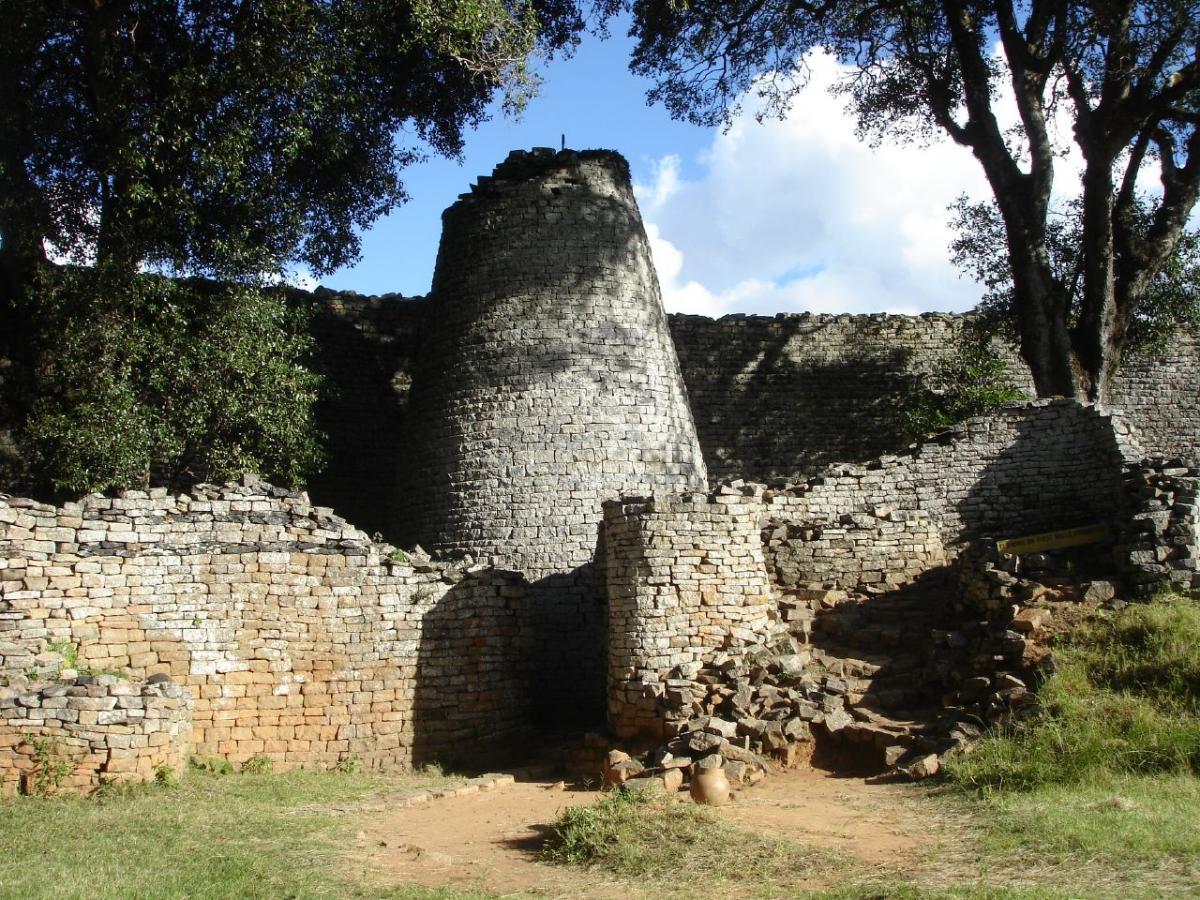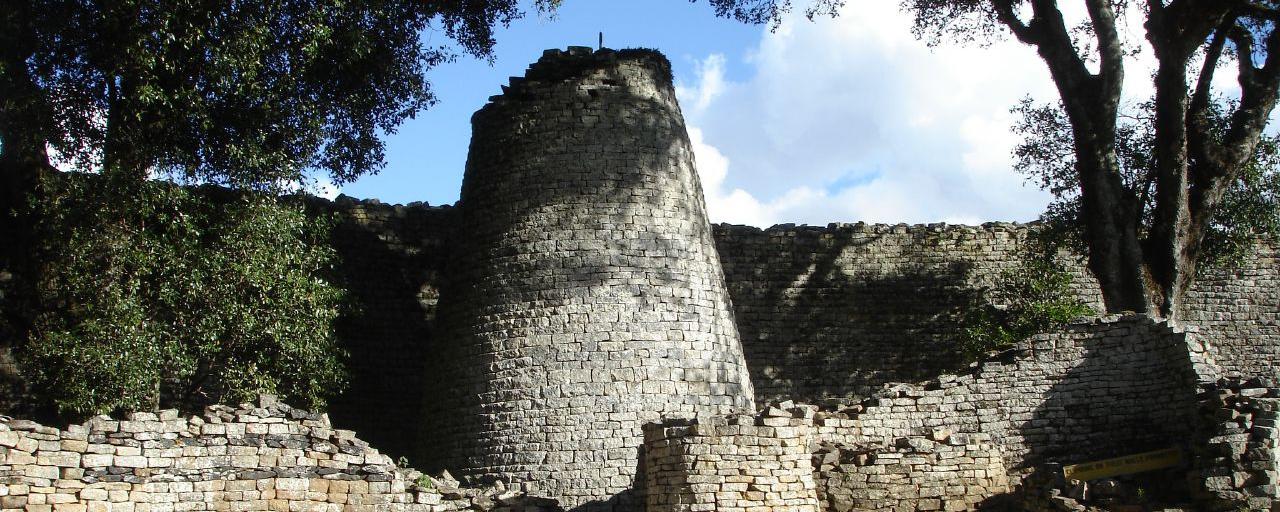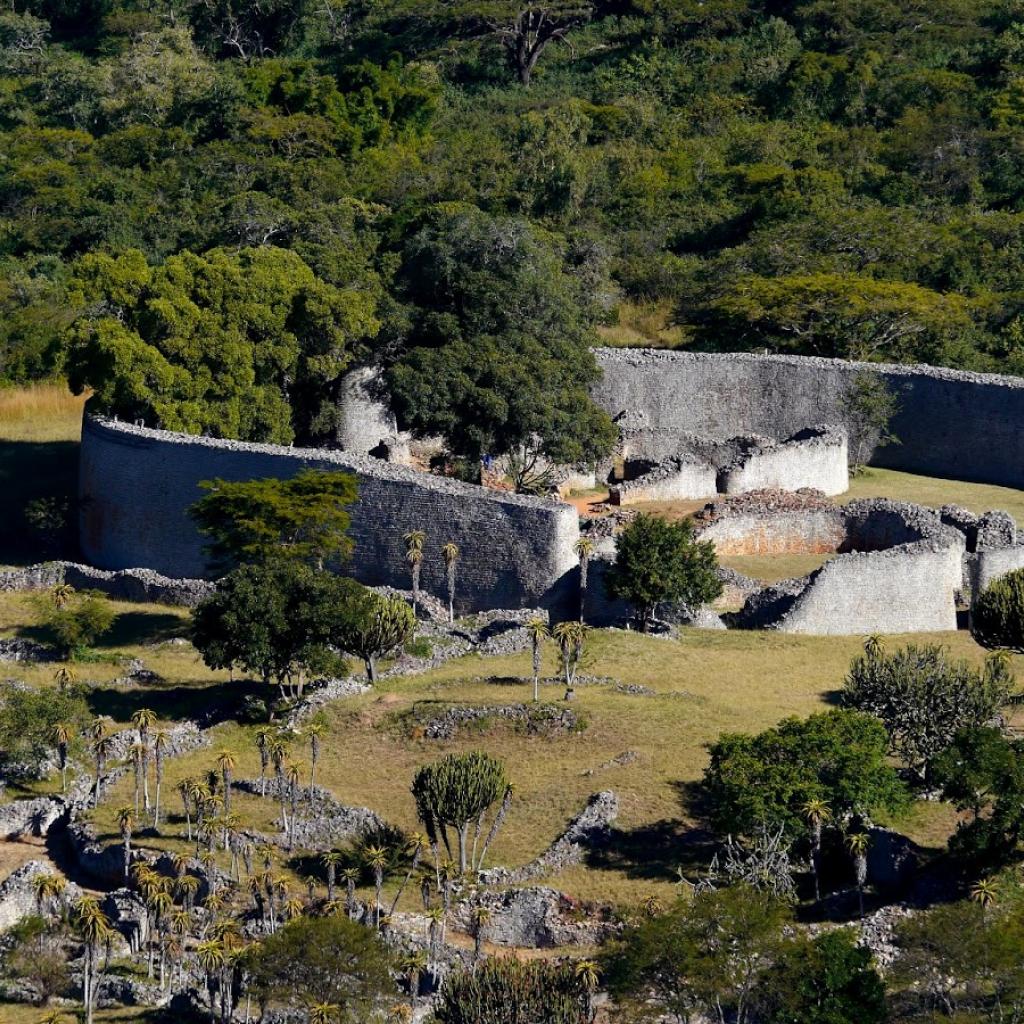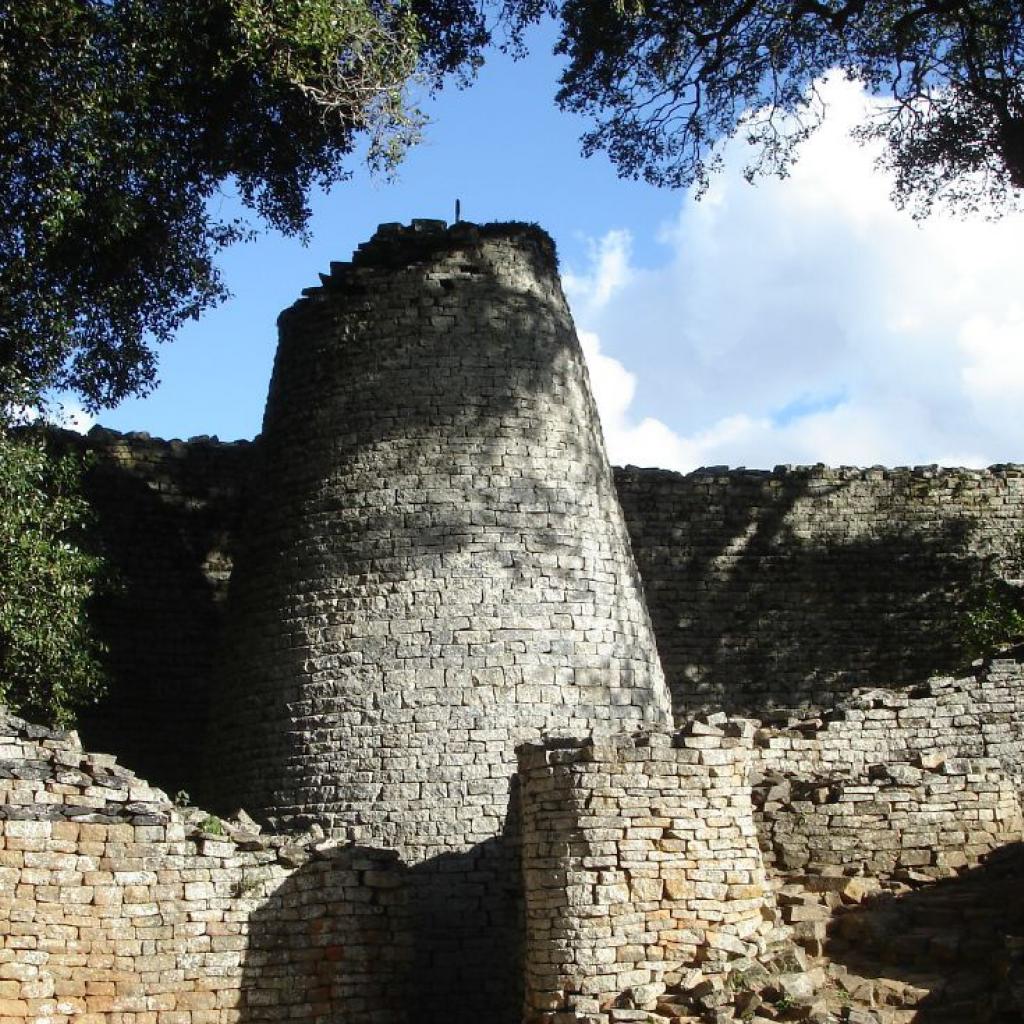The history of this impressive complex is unclear, archaeologists, who carried out the research, have formulated several hypotheses but none has been proven unanimously.
It is thought that the building of the Great Zimbabwe was initiated at an early stage between the X and XI centuries, but there are not many certainties about, the building seems to have been resumed later between the XIII and XV centuries; but some wooden artefacts found on site have been dated from the VII century, and they probably represent the evidence of human presence in this area already before the start of the stone construction.
The city reached its peak from the XII to the XIV century, it is estimated that at that time the city had about 20,000 inhabitants.
Among the finds there are also several objects and fragments of Chinese and Persian ceramics, some Arab coins and other artifacts clearly of non-African origin; this suggests that the city traded, especially gold, with other people and it was a commercial hub of extra-continental scale.
It has also been found a statuette depicting a raptor, probably a peregrine falcon, that has become the emblem of the country of Rhodesia before and now of Zimbabwe, and it is depicted on the flag.
Surely the city was built by a population of Bantu origin although it is not easy to identify this people; many local ethnic groups, including the Shona, the Venda and the Lemba, claim to be the descendants of the people who built this architectural wonder.
There is a clan belonging to the population of the Lemba that is called by the other clans "Tovakare Muzimbabwe" ie "those who built Zimbabwe", but there is no evidence of this; while many archaeologists believe that it is possible that the ethnic group that inhabited the city at the time of its splendor could also not be the same one that built it.
It is not known why the city at some point has been abandoned, some assumptions were made including a prolonged drought or a famine or an epidemic or even an economic crisis linked to a likely collapse of the trade of gold; it is also possible that, in the moment of its maximum size the city was no longer able to provide for the maintenance of its inhabitants, while some speculate that the city has been the subject of migration of peoples from the North.
Although the exact origin of the name is not known, some speculate that Zimbabwe is a contraction of "ziimba remabwe" or "ziimba rebwe" in the language of the Karanga, a dialect of the Shona and it means "large houses built with boulders"; others believe that the name derives from the Zezuru language, another dialect of the Shona, in this case it should derive from "dzimba woye" that means "venerated houses" expression that is still used today to indicate the houses or the graves of the leaders.
There is also the possibility that the word is derived from the Shona language and not a dialect, in this latter case it could be a contraction of "dzimba dza mabwe" that means "stone houses."
The Portuguese, in their travel reports, stated that the inhabitants of the place called it "symboa" meaning "court", this made scholars think that the whole, or part of it, was inhabited by a king; this is also supported by the fact that in the local culture the large rocks were used for the homes of kings and at the Great Zimbabwe many buildings were built right on top of large boulders.
The ruins were discovered by the Portuguese in 1531 when the city had already been abandoned and were described well by Vicente Pegado, Captain of the Portuguese Garrison:
"Among the gold mines of the plains between the Limpopo and Zambezi rivers there is a fortress made of incredible size stones, and that seem not to be linked by mortar ... The building is surrounded by hills, where other can be found, similar to the first for the type of stone and the absence of mortar; one of them is a tower more than 12 arms high (22 meters) "
This description aroused curiosity in Europe and a writer, Joao de Barros, in his book De Asia, argued that the Great Zimbabwe ruins were actually those of the Queen of Sheba city and the gold mines in the area were those belonging to King Solomon; this legend spread on the European continent and was considered appropriate to reality.
When Cecil Rhodes arrived in these territories founded a society for archaeological research, the Ancient Ruins Company, and commissioned the research at the Great Zimbabwe to the archaeologist James Theodore Bent.
Bent published the results of his research in his essay The Ruined Cities of Mashonaland where he wrote that he had found many artifacts proving that the city could not have been built by Africans and, most likely, its origins were due to the Phoenicians or the Arab.
This statement was actually in line with the interests of Cecil Rhodes who would never accept that Africans could have created a civilization like the one that created the Great Zimbabwe.
The same claims were also taken by Richard Hall in his essay The Ancient Ruins of Rhodesia in 1902.
In reality at the Great Zimbabwe there are elements from different cultures, probably the result of the trade that the city has had over the centuries, but also the movement in Africa of various populations.
The terraces found in the North-Eastern part of the site remind of cultures from the Indian Ocean or from Madagascar, other findings, however, show that the inhabitants of the Great Zimbabwe knew mining and agricultural irrigation, elements that suggest an influence of the Northern cultures, finally some vestiges similar to those of Mozambique suggest a contamination and cultural continuity.
Today, however, it is believed unanimously that the city was founded and built by a population belonging to the Bantu ethnic group, however, very difficult to say with certainty its identity.
Because of the dispute about the African origin or of the Great Zimbabwe and following the remarks of the white settlers on the fact that blacks would not be able to give rise to a civilization like that, this place became, for the independentists of Rhodesia, one of the symbols of deliverance of the power of whites and Robert Mugabe, the first black president decided to change the name of the country in Zimbabwe, to emphasize the continuity between the new state and the African cultural and political tradition.





